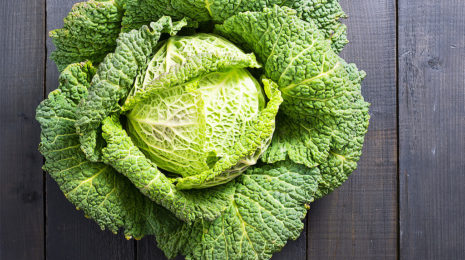Today, cauliflower is becoming increasingly popular among farmers. Moreover, its demand is not affected by the fact that it is more difficult to grow. Thanks to breeding, there are many new varieties of this vegetable. They tend to differ in the color of the cabbage. As for the purple cabbage, its homeland is Sicily. It is on this island that it is mainly grown. This motley plant will decorate any bed. In addition, cabbage is very tasty. It can even be eaten raw.
Colored Cauliflower History

It is worth noting that only natural remedies help to achieve different shades of color. So, to grow cabbage with a new color, natural pigment is used. This made it possible to obtain varieties of different colors.
Why Is Cauliflower Purple?
Cauliflower comes in green, purple, and orange multicolor variations. But why is purple cauliflower so vividly colored purple? Purple cauliflower gets its characteristic deep lavender hue from anthocyanins, antioxidants that are also present in red wine, according to the University of Arizona.
Is Purple Cauliflower Natural?
This purple and orange variety of cauliflower is natural, not from food dyes or textile dyes. It is not a “mutant” product obtained through cross-genetic engineering. Cauliflower gets its lovely color from an anthocyanin heart.
What Does Purple Cauliflower Taste Like?
The university claims that purple cauliflower, sometimes called graffiti cauliflower, has a softer flavor than white cauliflower and is sweeter, nuttier, and free of the occasional harshness present in white cauliflower. When cooked, it often keeps its color, yet when overcooked, it might become slightly green.
Purple Cauliflower Nutrition
Nutritional content of colored cauliflower – 100 grams of the plant contains:
| Calories | Water | Carbohydrates | Protein | Fats | Ashes |
| 30 kcal | 92g. | 5g. | 2g. | 0,2g. | 0,8g. |
Minerals
| Amounts Per Selected Serving | |
| Vitamin A | 3 mcg |
| Vitamin C, ascorbic acid | 70 mg |
| Vitamin E, alpha-tocopherol | 0.2 mg |
| Vitamin H, biotin | 1.5 mcg |
| Vitamin K, phylloquinone | 16 mcg |
| Vitamin RR | 1mg |
| Potassium | 210mg |
| Calcium | 26mg |
| Magnesium | 17mg |
| Sodium | 10mg |
| Phosphorus | 51mg |
| Iron, Fe | 1.4mg |
| Iodine, I | 3 mcg |
| Zinc, Zn | 0.28 mg |
Health Benefits of Purple Cauliflower

So, Here Are the Useful Qualities of the Vegetable
- Cauliflower has more vitamin C than citrus fruits. But, at the same time, it causes almost no allergies. [2]
- It helps in the prevention of cancer. [3]
- Compared to beans or peas, it has a higher iron concentration.
- Digestive health benefits from it. A lot of fiber restores the gastrointestinal tract’s natural function. Glucaraffin: shields the gastrointestinal tract from the effects of potentially harmful substances. This reduces the risk of ulcers and reduces irritation. [4]
- Vitamin B acts on muscle tissue, strengthening it. It also strengthens the heart muscle. [5]
- The huge protein content will be useful for those who don’t eat meat.
- Also, cauliflower removes cholesterol from the blood and improves the overall condition of the circulatory system. [6]
Contraindications of Purple Cauliflower
For all its advantages, this vegetable has disadvantages. Here is a list of some cases when it is better to refrain from eating it:
- If you are allergic to this plant. Even though this type of cabbage is hypoallergenic – there are exceptions.
- People with hyperacidity in the gastrointestinal tract or ulcers. Extra acid from cabbage can make things worse.
- It is undesirable to eat it postoperative period. The fact is that the body takes a long time to digest the vegetable.
- People who have high blood pressure due to kidney disease, it is better to refuse cabbage.
- If you suffer from gout – purple cauliflower is not recommended for you.
- If you have thyroid illness, eat it sparingly and carefully.
- With acute pancreatitis – it is better to give up. If there is a desire, you can grind everything into a puree. But eat it no more than once every 2-3 days.
How To Cook Purple Cauliflower
Purple cauliflower can be eaten in any form. But you need to know that the raw vegetable is quite hard. Moreover, if you have a delicate intestine, the fibers can damage it. Also, it is better not to roast the fresh plant. In summer, it is best to boil cabbage and only then eat it. You can consume the boiled vegetable on its own or with other dishes. Note that boiled cabbage contains almost no calories—30 kcal per 100 grams. So, if you want to lose weight, this product will be an excellent choice.
How Long Do You Boil?
For this you need to understand what and how you want to cook:
- For the steamer – 60 minutes. Yes, a lot of time, but the steam cooking preserves all the useful substances.
- Multicooker – 15-20 minutes.
- If you cook it the usual way in a pot – 20-25 minutes. If you make soup, you need to add it together with the potatoes.
- Boil for 8-10 minutes before frying the vegetable – so it will be softer. Next, cooked cabbage can be breaded (breadcrumbs / flour). Fry it in vegetable oil for 8-10 minutes. Remember that flour breading will make the product more moist.
- Batter. For cooking you will need 1 chicken egg, spices and herbs (if you want – grated cheese). Mix all this, add a little flour. In the resulting mixture we dip the sliced CC. Fry on a heated frying pan for 3-5 minutes on each side.

That’s Good To Know
Here’s some additional information you’ll need:
- After boiling the cauliflower, it must be immediately removed from the water. Otherwise, the cabbage will absorb the moisture and turn into jelly.
- It is best to rinse the boiled cabbage immediately under cold water. This way it retains its shape.
- Do not defrost frozen cauliflower before cooking! You can use it right away.
Purple Cauliflower Recipes
Conclusion
In conclusion, purple cauliflower is a unique and healthy vegetable that is packed with nutrients and antioxidants. Its vibrant color adds a pop of visual interest to any dish, and its mild, nutty flavor pairs well with a variety of other ingredients.
Purple cauliflower is easy to grow in a home garden, making it a great addition to any sustainable gardening practice. With its numerous health benefits and versatile culinary uses, it’s no wonder that this vegetable has gained popularity in recent years.
Whether you’re looking to boost your immune system, add more color to your plate, or simply try something new, purple cauliflower is definitely worth adding to your diet. So next time you’re at the grocery store or farmer’s market, keep an eye out for this nutritious and delicious vegetable.
FAQ
Yes, purple cauliflower can be eaten raw. Its tender florets make a great addition to salads or can be served as a crunchy and healthy snack.
Purple cauliflower can be prepared in a variety of ways, including roasting, sautéing, grilling, and steaming. To prepare, simply remove the leaves and cut the florets into bite-sized pieces.
No, purple cauliflower is a natural variety of cauliflower that gets its color from anthocyanin pigments, which are also found in other purple fruits and vegetables.
Yes, purple cauliflower is higher in antioxidants than white cauliflower, which can help boost your immune system and protect your cells from damage.
Yes, purple cauliflower can be substituted for white cauliflower in most recipes. However, keep in mind that its vibrant color may affect the appearance of the dish.











